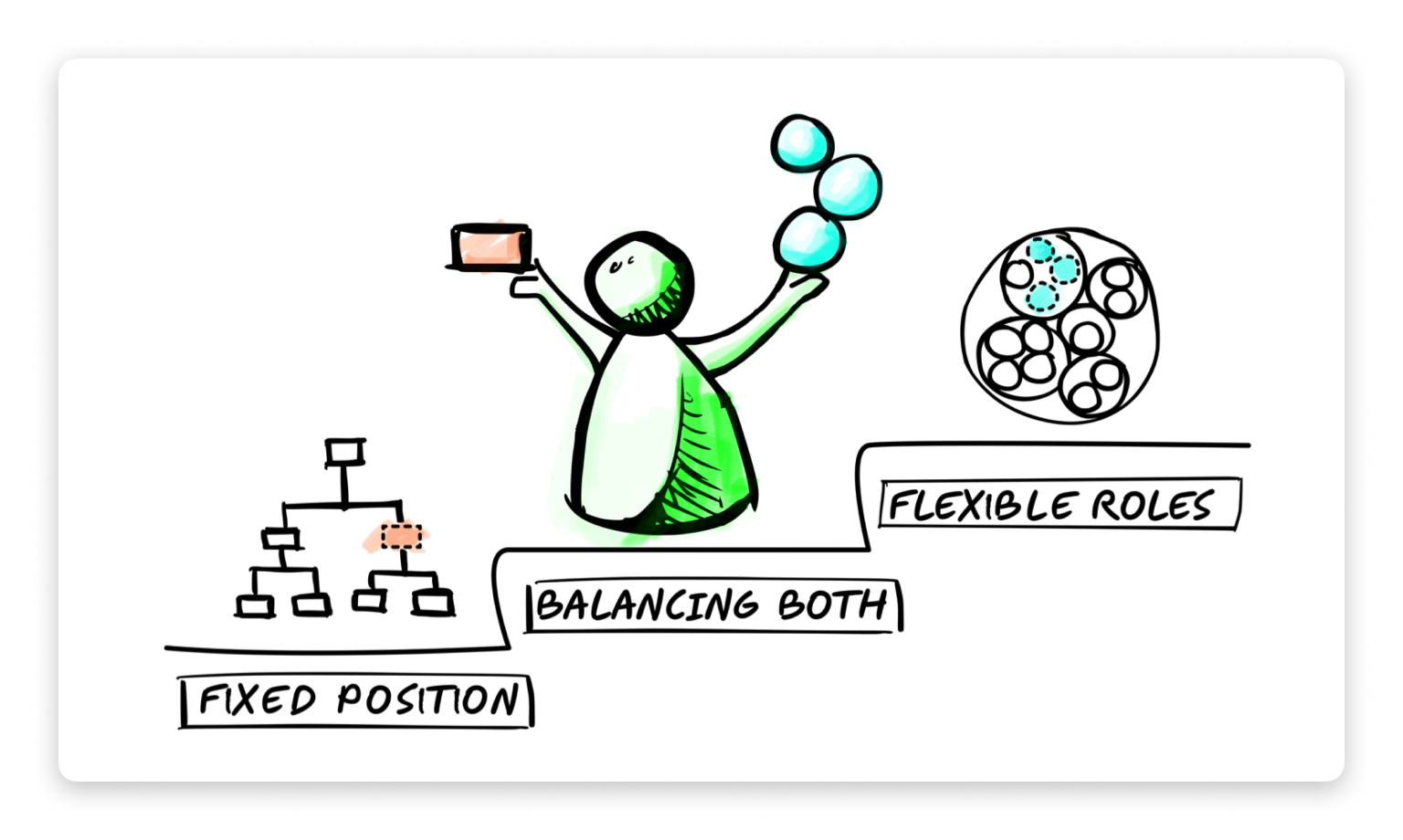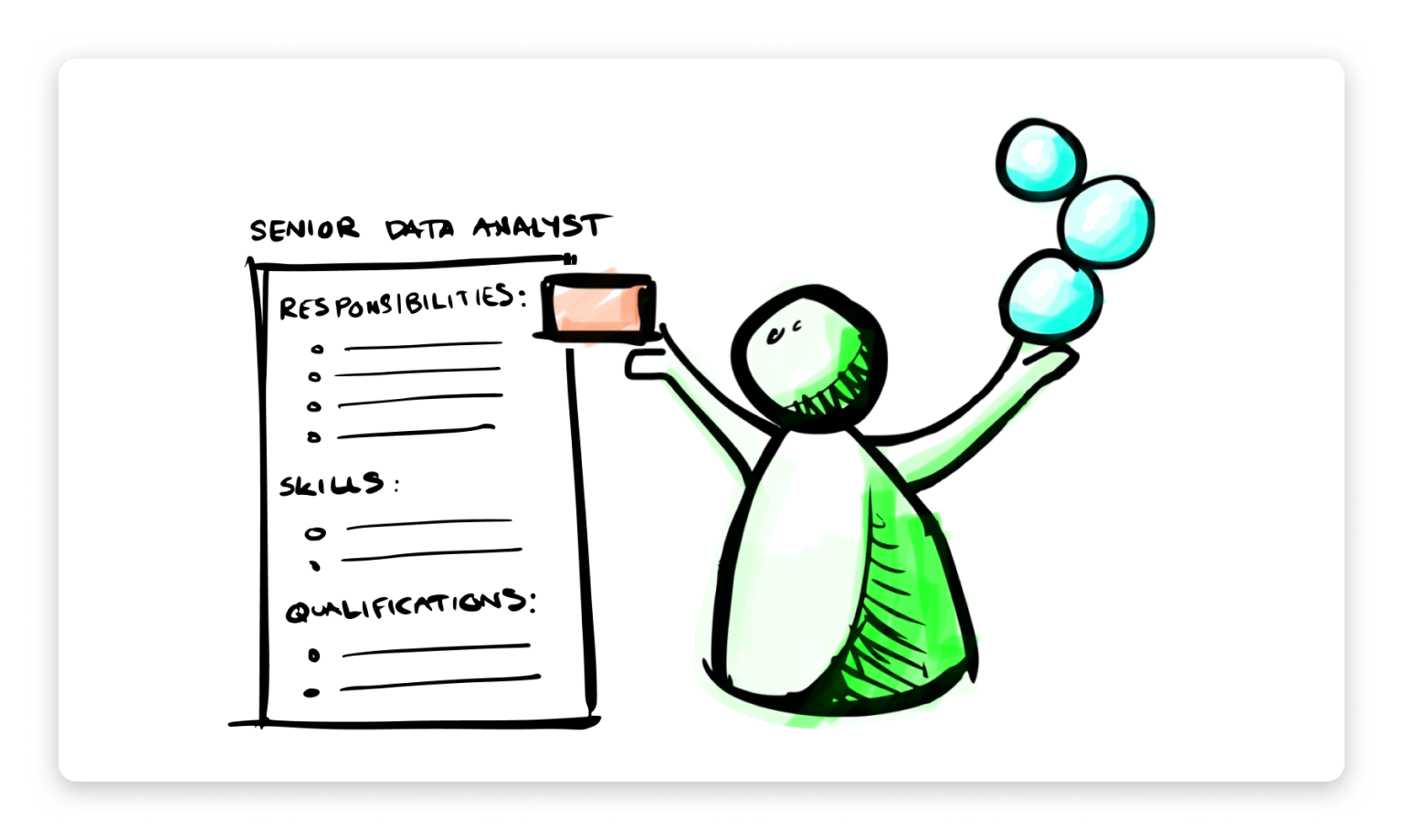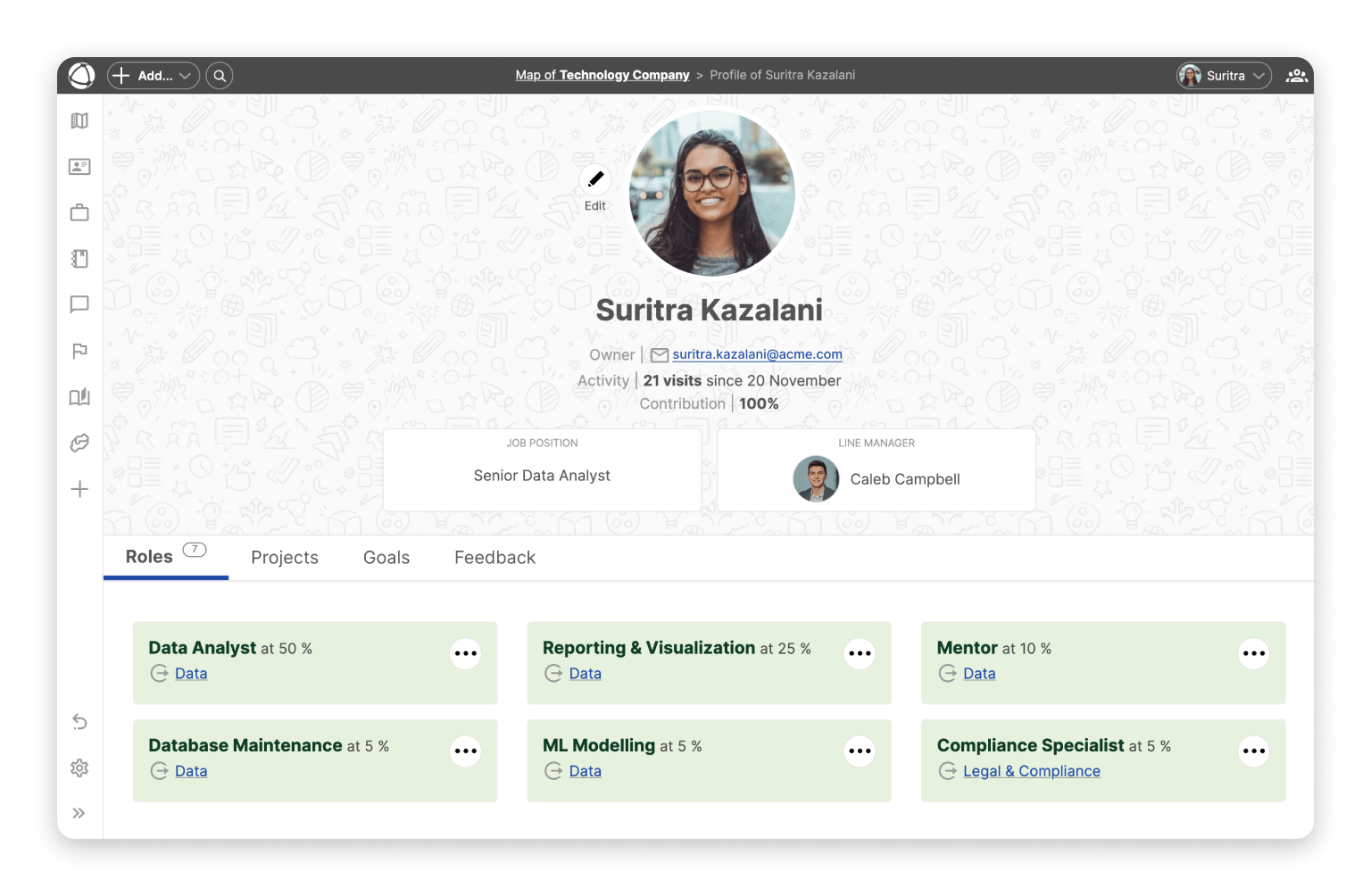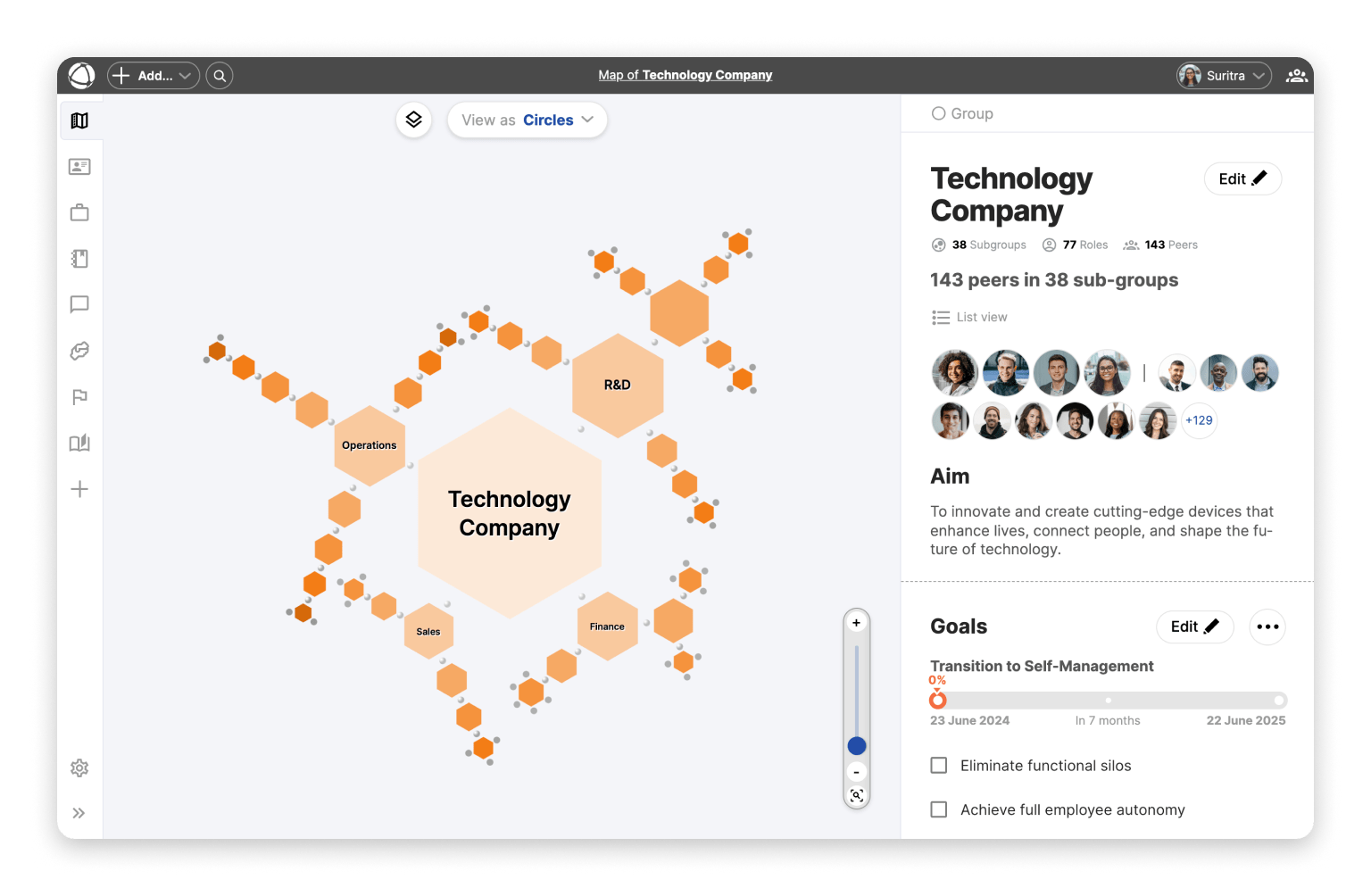The Future is Flexible: Start with Roles and Positions
Shift from rigid job titles to flexible roles while keeping functional divisions. Learn how Peerdom supports hybrid models that blend hierarchy with agile role-based work.

In today’s evolving work landscape, organizations are discovering new ways to balance structure and agility. One powerful idea? Blending the familiar structure of job positions with the flexibility of dynamic roles.
Rather than choosing between stability or adaptability, why not embrace both?
This hybrid approach allows organizations to maintain familiar structures while creating space for innovation, cross-functional collaboration, and more fulfilling employee engagement. Whether you're running a startup, scaling a team, or evolving a long-established org, this model can help you unlock new potential. Plus, you can start right where you are.
Why Combine Positions and Roles?

Job titles, hierarchies, and reporting lines provide structure and clarity. They’re useful anchors for compensation, recruitment, and team stability. But they don’t always reflect how work really gets done.
Roles, on the other hand, introduce a layer of flexibility and finer-grained clarity. They allow people to contribute skills outside of rigid boundaries, form temporary teams around goals, and adapt quickly as priorities shift.
Blending both can offer you the best of each world. Here’s what becomes possible:
- Iterate with confidence: You don’t need to overhaul everything to start exploring more flexible work. A hybrid model invites experimentation and growth without disruption.
- Empower meaningful engagement: Employees can lean into projects they care about beyond their official job title. This leads to higher satisfaction and stronger retention.
- Boost cross-team collaboration: Roles create natural opportunities for employees to connect across departments and bring diverse perspectives to shared goals.
- Cultivate a dynamic mindset: Working in roles builds adaptability and encourages people to think beyond their function and explore new ways to contribute.
What a Hybrid Model Looks Like
A combined approach doesn’t need to be complicated. It simply adds new layers of clarity and possibility.
- Everyone has a home-base position
Employees retain a clear place within the organizational structure, including a title, responsibilities, and reporting lines.
- Everyone can take on roles
Roles are more fluid and tied to projects or initiatives. They might be short-term or long-term, and often span across teams.
- Everything is visible
Both roles and positions are mapped transparently to help people understand workloads, goals, and opportunities across the organization.

Getting Started with Hybrid Work
Here’s a step-by-step way to put this idea into action using Peerdom:
- Map your current structure
Map fixed teams and their job positions. Assign each position to one person. This information can be taken from a classical org chart (organigramme).

- Create a space for roles
Set up an area for role-based work. Roles may be grouped together based on work to be done, for example a project, goal, or initiative. Read this article or watch this video for more tips about how to define roles.

- Connect people to work
Assign peers to both their job positions and their current set of roles. This creates a clear, living picture of their contributions and capacity.
- Start small and evolve
Pilot the approach with one team or department. Collect feedback, refine, and expand as it proves valuable.
Navigating Common Challenges
Every transformation brings questions. The hybrid model is designed to be adaptive, but here’s how to keep things clear and constructive:
Workload balance: Employees may worry about overwork.
Tips:
- Run coaching sessions to prioritize tasks and monitor workloads.
- Move general responsibilities from job descriptions into well-scoped roles.
- Recognize and reward contributions made in one's dynamic roles.
Understanding the model: People may wonder how this changes their daily work.
Tips:
- Share clear examples of how others are working across roles and positions.
- Keep everything transparent and easy to visualize.
- Encourage trying just one additional role to start.
Decision-making clarity: It’s important to align roles and traditional authority.
Tips:
- Hold open conversations about priority setting across the two models.
- Empower role autonomy while helping managers shift to coaching and mentoring.
An Invitation to Explore
This work hack invites more creativity, connection, and contribution into your organization. Whether you're looking to evolve gradually or energize your team with new possibilities, combining roles and positions is a practical step forward.
Curious how it could work in your context? Let’s chat or book a demo. We’d love to help you map it out.
